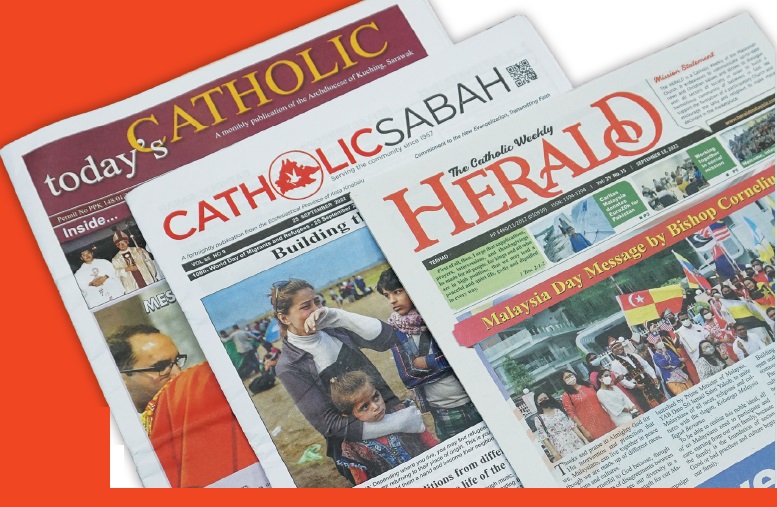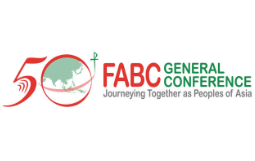Catholic Media — Communicating in a changing landscape
When Pope Francis met members and staff of the Dicastery for Communication recently, he said listening to people is at the heart of communication and must be a special mark of Catholic communication efforts.
Dec 09, 2022

By Cindy Wooden/ Lucien Chauvin,
When Pope Francis met members and staff of the Dicastery for Communication recently, he said listening to people is at the heart of communication and must be a special mark of Catholic communication efforts.
And then he pointed to Andrea Monda, director of the Vatican newspaper, L’Osservatore Romano, who, the Pope said, listens and takes risks.
However, referring to the cost of running the paper, Pope Francis also said, “Yes, L’Osservatore is a problem, we all know that” but Monda, “instead of closing L’Osservatore opens another, the ‘street’ edition!”
L’Osservatore di Strada, a monthly, is funded by donors and includes articles, commentary, photos, poetry and drawings from people who are poor or homeless. The homeless distribute the newspaper for a freewill offering every Sunday to people attending the Pope’s Angelus prayer in St Peter’s Square, keeping what they earn.
“If L’Osservatore Romano and the other Vatican media are called to offer readers a key for interpreting this pontificate and this age, a reality like L’Osservatore di Strada tells them what kind of time we are living in and what the vision of Pope Francis is,” Monda said. “It explains it much better than a treatise would.”
As for the main newspaper, without offering statistics or budget figures, Monda acknowledged that subscriptions to the print edition continue to decline, so they have been cutting costs while also building up their online edition “with great results. Today we have more than 10 times the number of online readers than we did four years ago,” and that is even after starting to charge a “symbolic” 20 euros for an annual subscription two years ago and recently doubling the price.
Still, Monda is convinced that L’Osservatore “must have a print edition” and not only because it has had one for 161 years. Its role as an institutional source of information about the Vatican and, especially, about the teaching of the popes, means each issue is a document.
After all, he noted, a papal decree ends with a line saying it will enter in effect upon publication in L’Osservatore Romano; “it’s an official gazette.”
Helen Osman, president of Signis, the World Catholic Association for Communication, said that while there are signs of hope for Catholic media in many parts of the world, especially in Asia, “I think, in general, we’re challenged. And one of the reasons is because we have a credibility issue with our readers, viewers, listeners.”
“I hear that everywhere. I mean, everywhere: the Pacific, Africa, Latin America, North America, Europe. There’s no exception to that at least if people are willing to look critically and objectively at their impact,” she said recently while at the Vatican for the Dicastery for Communication meeting.
Asked specifically about Catholic newspapers, Osman said, “I don’t think print is dead, but I don’t think it is king anymore.”
But even Catholic radio stations in Africa and Latin America, where Catholic newspapers were never predominant, are asking questions like those facing Catholic newspapers, she said.
Catholic radio journalists ask, “what do we want to have on our stations?” she said. “It’s not fluff pieces and it’s not pious devotions that you’re broadcasting. But how do you engage with people and issues that matter for them in their daily lives? And I can tell you, this issue of holding our own Church accountable is everywhere. It is everywhere.”
Defunding newspapers and halting publication may not be the best use of resources, said Mauro Ungaro, president of the Federation of Italian Catholic Weeklies and editor of one of them, Voce Isontina, the newspaper of the Archdiocese of Gorizia.
“Diocesan newspapers are not an expense but an investment,” he said.
The federation includes 187 newspapers and news websites from 160 dioceses. Some dioceses have two member publications because they run separate newspapers for Catholics who speak Italian and those who speak German or, in Gorizia, Slovenian, he said.
The number of print publications has held steady for the past 10 years, he said, but given Italy’s decreasing family size, the number of readers is obviously declining. The combined print run of the Catholic weekly newspapers is between 600,000 and 700,000 copies each week.
Most diocesan newspapers in Italy were founded after the publication of Pope Leo XIII’s encyclical on labour, Rerum Novarum, Ungaro said, and grew out of a recognition that the bishop and the Church needed to know how people in the diocese were living, what challenges they were facing and how the Church could assist and inspire them by sharing stories of faith.
While “we are not the voice of the sacristy, but of the Church,” Ungaro said, the contribution and support of the bishop is essential because he is the servant of the diocese’s unity.
Like in other countries, he said, there are bishops who say it would be better to put their limited resources into charity or evangelisation or schools, rather than newspapers .
“But I think there is a material charity which the Church exercises every day through Caritas and the parishes, and there is a cultural charity, which is to transmit values, transmit a message, and that is what diocesan newspapers do.”
Professional Catholic journalists evangelise by “recounting the stories of people who get their hands dirty helping the poor without seeking any attention,” he said. It is a more effective form of witness than “repeating 40 Bible verses” because it gives readers an example to follow.
During the height of the COVID-19 pandemic, he said, everyone knew the government and secular news sites where they could find charts counting the number of new infections, hospitalisations and deaths.
But “our websites registered a notable increase in traffic,” he said. People turned to their local diocesan newspapers to read about the local people behind those statistics, stories about the lives of the deceased and about the sacrifices of the doctors, nurses and priests caring for them. While changing, print media is still an important source for information in countries throughout Asia.
Agnes Chai of Catholic Sabah in Malaysia said print media is critically important in her corner of the world.
“Our technology infrastructure is less than super, which affects people who live in the rural areas, so print news is the only source of information available for some of our parishioners in remote areas,” she said.
For Jesuit Fr Cedric Prakash, the print media remains a staple in his country, India, and much of Asia.
“The spread of social media has been tremendous, but there is no substitute for print media for many people in Asia. I am convinced that the two will coexist for some time to come,” said Fr Prakash, a prolific writer based in Ahmedabad.
Christopher Joseph, editorial coordinator of the Union of Catholic Asian News, one of the world’s largest Catholic news agencies, said two issues are critical for Asia — language and content.
He said print media continues to be important in many areas, where content from UCA News and other agencies are translated into multiple languages. He said the success of UCA News, however, is the independent nature of its content. The agency is not financed by any of the bishops’ conferences in Asia. “We have very good relations with the hierarchy, but we are independent. We are the first Catholic agency that is staffed only by laypeople. We are fiercely journalistic, but also fiercely Catholic, which is why it works,” he said.
He said the key is reporting on what matters to people and providing context to the news bits and sound bites found on social media.
“Social media is changing the way we understand the truth and how people comment on Church news and social issues. These stories tend to contain a grain of truth, which makes our reporting all the more necessary,” he said.
Montfort Fr Andrew Kaufa literally wrote the book on Catholic media in Africa. His 2020 book, The Elephant in the House, examines Catholic media in East Africa, but it is applicable around the world. He said social media has basically made everyone a journalist, so Catholic media should double down on what it does best.
“The margin between spreading news and rumours is very thin. I think Catholic media can be helpful to the people if they opt not so much for breaking news but for verification of news, which requires the Catholic media to include more research and critical analysis. In this way, they will avoid the trap of misinformation but also gain the reputation of people as reliable, credible sources of news,” he said.
Frs Kaufa and Prakash caution that Church media cannot get stuck reporting only niceties about the clergy. Fr Kaufa said Catholics in Africa want a holistic approach from Catholic media.
“The news reported by Catholic media must give a full picture of what is happening in the Church, but also in the secular world, what is going on politically, economically and socially speaking.
Fr Prakash said he fears Church media is not effectively communicating the signs of the times.
“Catholic newspapers and magazines are not addressing critical issues. It is easy to write about the Pope’s encyclical Laudato Si’ and encourage people to plant a tree or not use plastic, but they will not take on the corporate sector that is responsible for destroying the environment,” he said. -- CNS







Total Comments:0